Mastering the Art of Pumping Hydrofoil Boards
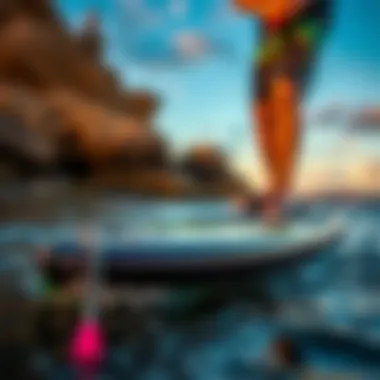
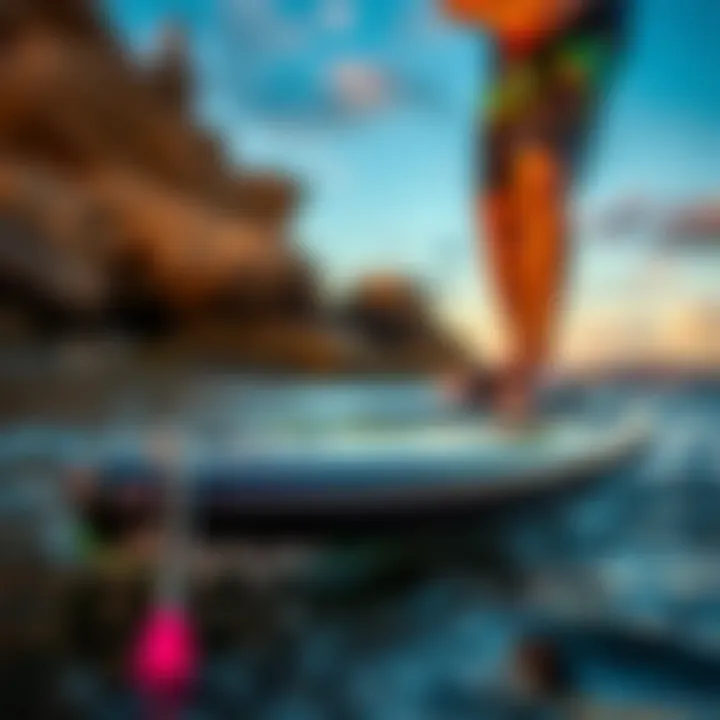
Intro
Pumping hydrofoil boards represents a fascinating intersection between sport and technology, capturing the imagination of kiteboarders and adventure seekers alike. As this sport gains traction, understanding the mechanics behind hydrofoil technology becomes key. Hydrofoiling isn’t just a flashy trend; it’s a means to enhance your riding experience, taking you to new heights—both literally and figuratively. From ensuring proper gear selection to mastering nuanced techniques, each aspect plays a pivotal role in transforming how one navigates the water.
In this article, we’ll dive into the core elements that define pumping hydrofoil boards. Let’s sift through the intricate details that not only heighten performance but also ensure safety on the water. With a clear grasp of these concepts, enthusiasts can elevate their kiteboarding endeavors to significant new levels.
Gear and Equipment
Essential Kiteboarding Gear for Beginners
Starting out in the world of hydrofoiling can be overwhelming, but having the right gear is fundamental in smoothing out the learning curve. A few essentials include:
- Hydrofoil Board: Look for boards with a size and volume suitable for your weight and skill level. A beginner might consider larger boards for stability.
- Foil Setup: Choose a foil that balances lift and stability. A model with a wider wingspan is often more forgiving for newcomers.
- Kite: Opt for a kite that matches your riding style and wind conditions. Generally, a larger kite is preferable in lighter winds, while a smaller kite helps in stronger winds.
By selecting the right gear, you’ll find that both your confidence and skills progress rapidly.
Advanced Equipment for Experienced Riders
Once you’ve acquired the fundamentals, upgrading your equipment to meet your evolving skills is crucial. Advanced riders might invest in:
- High-Performance Foils: These often feature varied wing sizes and shapes designed for speed and maneuverability.
- Specialized Boards: Lightweight, high-tech materials such as carbon fiber can greatly improve responsiveness.
- Custom Kiting Gear: Personalized kites with tailored specifications can amplify your performance in diverse settings.
Staying abreast of the latest innovations boosts your chances of discovering the equipment that works best for you.
Techniques and Tips
Safety Practices for Kiteboarding
Safety should always take precedence. A good start is:**
- Check Equipment Regularly**: Inspect your kite, lines, and board for wear and tear before each session. A simple oversight can lead to mishaps.
- Stay Aware of Conditions: Understanding weather patterns and water conditions is paramount. Start with moderate winds until you’re truly comfortable.
- Use a Leash: A submerged board can pose a hazard. Always use a safety leash to keep your gear attached.
"Regular practice and safety go hand-in-hand. Every session is a chance to improve while keeping yourself protected."
Training Techniques to Improve Your Skills
To truly elevate your skills on the hydrofoil, specific training techniques can be employed, such as:
- Dryland Training: Spend time balancing on a skateboard or a balance board to enhance stability and coordination. It’s all about muscle memory.
- Video Analysis: Record your sessions; seeing your technique can offer insights that you might miss while riding.
- Join a Community: Engage with fellow riders through forums like Reddit (reddit.com) or communities on Facebook. Learning from others’ experiences can fast-track your progress.
By focusing on these techniques, kiteboarders can hone their skills effectively, boosting both confidence and enjoyment on the water.
Combining proper gear and robust techniques sets the stage for a fulfilling hydrofoiling experience. Whether you're traversing quiet waters or carving through high winds, the understanding of your equipment and skills can lead to unimaginable adventures afloat.
Understanding Hydrofoil Boarding
Pumping hydrofoil boards introduces a completely new dimension to the sport of kiteboarding. As enthusiasts progress from traditional boards to hydrofoils, they often face a steep learning curve that requires an understanding of the dynamics and mechanics unique to this equipment. This section delves into the essence of hydrofoil boarding, exploring what makes it distinct and the benefits it presents.
Foreword to Hydrofoils
Hydrofoils, in simple terms, are underwater wings that lift the board above the water's surface as speed increases. The thrill of gliding above waves with minimal resistance is unmatched. However, it's more than just the ride; it's about gaining control and mastering the craft. To catch the wind right and maintain speed, one must understand the principles of lift and drag. Hydrofoils are designed to create lift effectively, allowing riders to elevate themselves as they maneuver.
It’s crucial to grasp the basic components of a hydrofoil: the mast, wings, and fuselage. The interplay of these parts determines performance. A rider who fails to understand how these elements work in harmony may struggle to achieve the desired experience.
Benefits of Hydrofoil Boards
The shift to hydrofoil boards offers several advantages that traditional boards cannot match. For instance:
- Increased Speed: Hydrofoils reduce water resistance, enabling riders to achieve higher speeds more easily when the wind is favorable.
- Enhanced Navigation: With the board elevated above the water, hydrofoils can navigate choppy waters with grace.
- Extended Ride Time: A hydrofoil board requires less power to lift, allowing for extended sessions on lighter wind days.
- Exciting New Techniques: The art of pumping—a technique that allows riders to generate speed without drawing on the kite—becomes increasingly crucial, enhancing skills further.
However, the transition comes with its own set of challenges. Every rider must weigh the pros and cons, and developing an understanding of these benefits helps in recognizing the unique experience offered by hydrofoils.
Pumping Mechanics Defined
Pumping mechanics play a crucial role in hydrofoil boarding. This concept involves the rider using body movements to create a rhythm that generates speed without the need for extra power from the kite. Proper pumping technique can propel the rider ahead in minimal wind conditions, creating a gratifying connection between the rider and the board.
Fundamentally, pumping relies on the rider's ability to shift weight and maintain momentum. Subtle movements—like bending the knees or tilting the hips—can make all the difference in staying afloat and moving forward. As riders become familiar with these mechanics, they unlock a new level of performance that traditional boards may not provide.
"Pumping is where the magic happens. Once you get the feel for it, you can ride the waves all day without running out of juice from your kite."
In essence, understanding hydrofoil boarding is not merely about riding; it's about the mechanics that empower a seamless experience. Achieving mastery necessitates both knowledge and practice, paving the way for a deeper appreciation of this innovative sport.
Key Components of Hydrofoil Boards
The world of hydrofoil boarding hinges on a solid understanding of the key components that make up these innovative boards. These elements not only contribute to the performance and efficiency of the ride but also influence the overall experience of the user. A hydrofoil board consists of several interconnected pieces working together like a well-oiled machine. Understanding these components is vital for anyone looking to elevate their hydrofoil experience, be it a novice rider or an advanced kiteboarding enthusiast.
Foil Structure and Design
Wing Shape and Size
The wing shape and size of the foil significantly dictate its hydrodynamic performance. Larger wings provide more lift at lower speeds, which is advantageous for beginners who might struggle with balance. Conversely, a smaller wing can offer less drag and increased speed for more experienced riders. It's important to find a balance between these characteristics depending on one’s riding style and skill level.
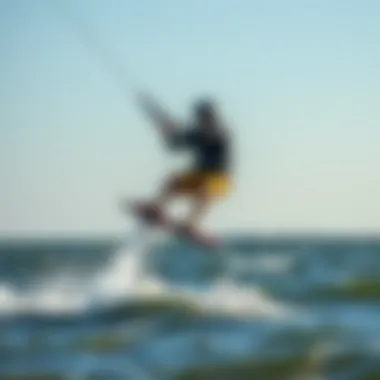
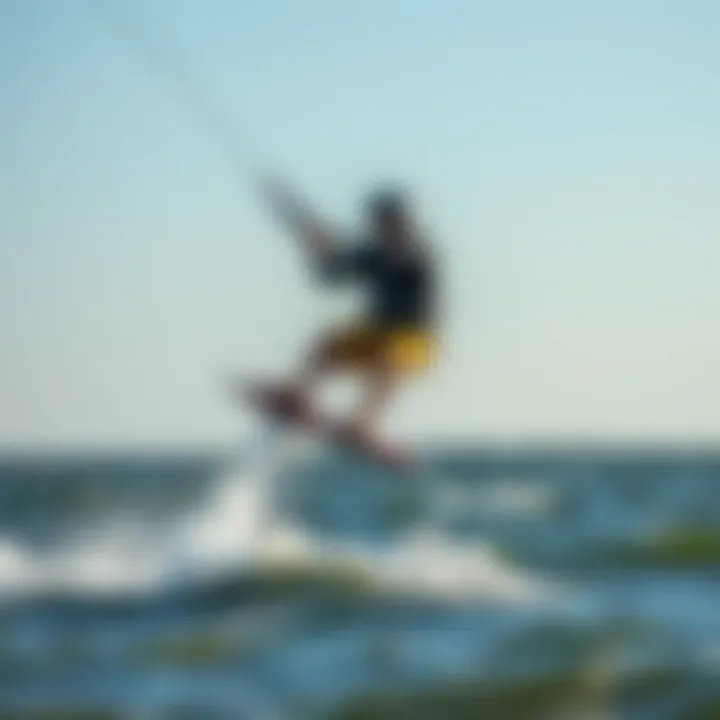
An important characteristic of wing size is its aspect ratio. High aspect ratio wings are long and narrow, providing excellent lift but less maneuverability. On the other hand, low aspect ratio wings are wider and offer greater turning capabilities but at a cost of drag. Thus, choosing the right aspect ratio shapes your ride completely.
“The wing's design can either lift you above the waves or leave you floundering in them.”
Material Composition
Material composition plays a crucial role in the durability and weight of the hydrofoil. Carbon fiber, aluminum, and high-density plastic are common materials you might come across. Carbon fiber is lightweight and strong, making it a popular choice among serious riders who prioritize performance. Aluminum, while heavier, can be more cost-effective and rugged, suitable for those just starting out or riding in rougher conditions.
The unique feature of different materials impacts how the board reacts to water pressure and rider movements. A board made from high-quality carbon fiber can efficiently transmit energy, providing a more responsive ride. However, it may come with a higher price tag, which is a key factor for budget-conscious buyers.
Board Characteristics
Length and Width Considerations
The length and width of a board significantly influence stability and maneuverability, serving different rider needs. Wider boards offer more surface area, which increases stability and is suited for beginners. However, this comes at a compromise on speed. For advanced riders, narrowing down the width allows for sharper turns and more aggressive maneuvers.
Selecting the right length is also crucial. Longer boards can generate more speed, while shorter boards allow for easier handling. Ultimately, it’s about personal preferences and the conditions in which you plan to ride. Finding the balance can enhance your ability to pump effectively, contributing to an elevated hydrofoil experience.
Volume and Weight
Understanding the volume and weight of your hydrofoil board ties directly to buoyancy and control. A higher volume board is advantageous for lighter riders, as it provides better flotation. This aspect becomes particularly crucial during the learning phase. However, a heavier board might require more effort to lift out of the water, leading to difficulties in achieving optimal pumping rhythm.
Balancing the volume and weight allows riders to match their skill levels and preferences. It’s essential to consider not just how the board feels but also how it fits into the dynamic of your overall hydrofoil setup.
Control Mechanisms
Mast Height
Mast height is a pivotal characteristic affecting the overall riding experience. A higher mast allows for a smoother ride over choppy water, while a lower mast may offer more stability for beginners. When considering mast height, think about the conditions where you’ll be riding most often. High masts can help you glide easier, but they may also make you more susceptible to wind gusts and abrupt water changes.
An ideal mast height balances control and fluid motion through water, taking into account your skill level and riding style.
Fuselage Length
Fuselage length has a significant impact on a hydrofoil board's turning radius and stability. A longer fuselage provides better tracking and stability when riding at high speeds, which is often favored by advanced riders. On the flip side, a shorter fuselage enhances maneuverability, allowing quick directional changes, suitable for more casual riders.
When diving into the detail of fuselage lengths, riders should consider both stability and agility depending on their personal style and the types of riding they plan to do. It’s a subtle yet defining factor in how one interacts with the water.
Techniques for Pumping Hydrofoils
Understanding the techniques for pumping hydrofoils is essential for maximizing performance on the water. Pumping involves generating lift without the constant push from the kite, which requires a nuanced approach. The importance of these techniques cannot be overstated; they can determine whether a rider glides majestically across the waves or struggles to catch air. Mastering these aspects can lead to enhanced efficiency and prolonged riding time, ultimately improving the overall experience.
Initiating the Pump
Proper Body Positioning
Proper body positioning is a key element in initiating the pump effectively. The way a rider distributes weight and positions their center of gravity can greatly influence lift. Balance is crucial—leaning too far back or forward can cause instability. In hydrofoiling, maintaining a low center of gravity helps in quick adjustments when needed, aiding in establishing that initial thrust.
One benefit of this positioning is that it allows the rider to easily shift weight as needed, which can be particularly helpful when transitioning to a different speed. However, if not executed correctly, it might lead to unwanted fatigue, as the muscles have to work harder than necessary. Finding the sweet spot may take time, but it’s definitely worth the effort.
Foot Placement
Foot placement is another important component that contributes significantly to the success of hydrofoil pumping. Properly positioning one's feet can enhance control over the board, ensuring a smooth start. It’s typical to have feet slightly apart, with the front foot closer to the nose to help with initial lift while the back foot applies downward pressure.
The unique feature here is how this placement can alter dynamics during turns or when picking up speed. While a more rigid stance might help on initial setups, it can also hinder agility when quick adjustments are required, leading to potential losses in momentum. A flexible approach to foot placement allows for greater adaptability on the water, but novice riders might find a more rigid setup reassuring as they get accustomed to the foil’s responsiveness.
Sustaining Momentum
Weight Distribution
Weight distribution plays a pivotal role in sustaining the momentum gained from the initial pump. This involves shifting weight between feet, ensuring that the foil remains in optimal contact with the water surface. Pushing down through the back foot and maintaining pressure on the front foot are common practices—this generates lift while keeping the board steady.
The characteristic of effective weight distribution is that it allows riders to fine-tune the angle of ascent, giving them the ability to glide effortlessly. A disadvantage, however, is that incorrect weight shifting can cause the rider to plummet back into the water, disrupting progress. It’s crucial for riders to practice these shifts, especially in varying conditions, to avoid unwanted crashes.
Timing and Rhythm
Timing and rhythm are not just about the physical motions; they’re also about the overall flow of the ride. Riders must synchronize their body movements perfectly with the acceleration of the pump. When done correctly, this enhances the forward drive, making the experience smoother and more enjoyable.
A key feature of mastering timing is learning how to maintain a seamless rhythm within a pump cycle. This is beneficial as it creates a natural flow that can prolong riding. But sync issues lead to inefficiency, causing loss of speed or an abrupt halt, resulting in a frustrating fall. Practicing this aspect can take time, but it ultimately shapes a more confident rider.
Advanced Pumping Techniques
Linking Turns
Linking turns is an advanced technique that transforms basic riding into dynamic maneuvers. The essence of linking turns is maintaining the flow of pressure through the turns, using body movement to generate lift as one transitions from one direction to another. This adds an element of finesse, allowing riders to maintain speed even during directional changes.
The key characteristic of linking turns lies in its ability to keep riding exciting. However, this does come with challenges; achieving seamless turns requires a strong understanding of weight shift and timing. Failure to execute might result in loss of control, and that can quickly end a run.
Increasing Speed through Pumping
Increasing speed through pumping is what many advanced hydrofoil boarders aim to master. By effectively utilizing the momentum created through pumping, riders can push themselves further than before. The common approach requires quick foot adjustments and precise weight management to maximize speed.
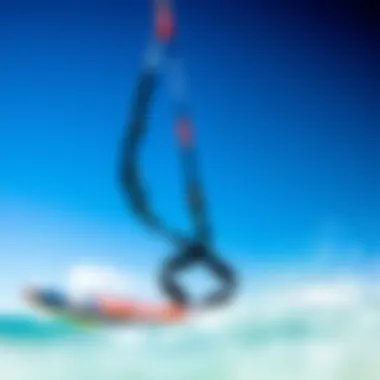
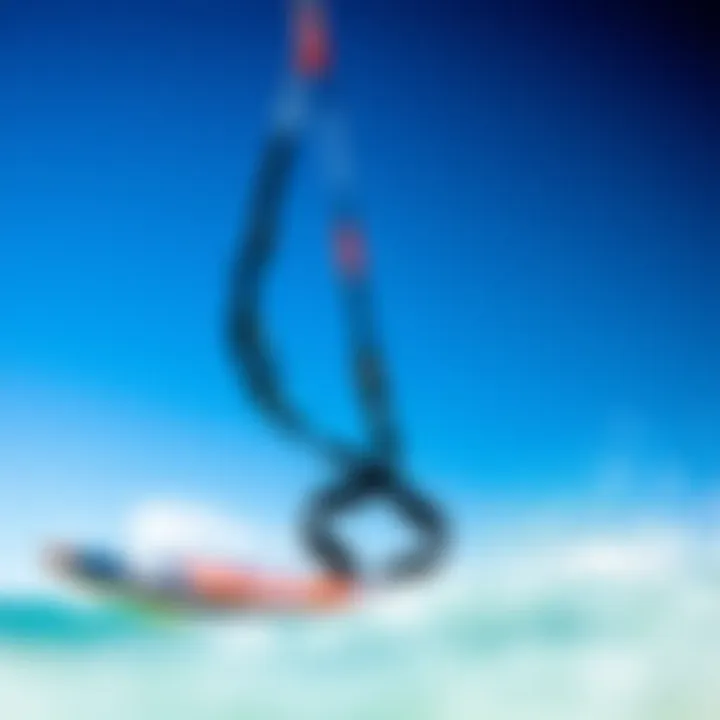
One unique advantage here is that by mastering this technique, riders can often outpace the wind, allowing for agile navigation in challenging conditions. However, the flipside is that not everyone will find it easy to control these speeds, particularly in turbulent waters. This demands both confidence and skill to harness wind and water to one’s advantage.
Pumping hydrofoils isn’t just about skill; it’s a blend of technique, rhythm, and instinct. Each of these aspects requires a good amount of trial and error but can lead to exhilarating rides that define the experience on the water. As with any sport, practice makes progress, and embracing these techniques can take riders from novice to proficient.
Safety Practices in Hydrofoil Boarding
Engaging in hydrofoil boarding offers thrilling experiences, yet safety remains paramount in any water sport. Before diving into propelling oneself across water with the aid of a hydrofoil, ensuring proper safety practices is essential. It not only protects the rider but also enhances the overall enjoyment of the adventure. The unpredictable nature of water conditions combined with the physiological demands on the rider creates a necessity for robust safety considerations.
Key Safety Gear
Impact Vests
When it’s about cushioning those potential thuds and falls, Impact Vests become a crucial companion. These specialized vests are designed to absorb shock, providing a safeguard against the inevitable tumbles that come with learning or even perfecting hydrofoil techniques. The primary characteristic of these vests is their padding, which often consists of high-density foam, capable of dissipating force from impacts. This feature is not just about comfort; it's about keeping those who ride feeling secure while they navigate the complexities of hydro rides.
While many may overlook the necessity of an impact vest, this gear significantly reduces the risk of injuries that could sideline riders for weeks. The buoyancy they offer isn’t just a bonus; it helps with keeping riders afloat in unexpected situations, allowing for a smoother recovery after a spill. One thing to consider, though, is fit—an ill-fitted vest can actually hinder performance, so choosing the right size is non-negotiable.
Leash Requirements
Next on the list of safety must-haves are Leash Requirements. The leash serves as a lifeline, attaching the hydrofoil board to the rider. This connection is crucial, especially when speeds get high and falls happen. The primary function of a leash is to prevent the board from drifting away, posing a risk to both the rider and nearby individuals.
A well-constructed leash, typically made from durable materials, absorbs the forces exerted during falls, reducing strain on the rider. What’s even more appealing about this gear is that it enhances rider confidence; knowing that one’s board won’t float off into the blue creates a sense of assurance that’s invaluable. However, riders should consider the potential drawbacks of using a leash in turbulent water, where tangling could pose hazards.
Understanding Hydrodynamics
Gaining insight on Hydrodynamics is a cornerstone of safe boarding. It’s essential to comprehend how the interplay of wind and water influences riding conditions.
Calculating Wind and Water Conditions
Understanding Calculating Wind and Water Conditions is like having an ace up your sleeve. Before hitting the waves, having a grasp of these two elements not only ensures safety but also enriches the riding experience. Determining wind speeds and water surface conditions can warn riders about potential challenges they may face. Wind direction can greatly affect hydrofoil performance; for instance, an off-shore breeze may assist in lifting the board, whereas turbulent winds might increase instability.
On calmer days, water conditions provide a smooth surface, promoting easier pumping and better cruise control. However, choppy waters can be a prescription for disaster if not approached with caution. By paying attention to these elements, riders can make informed decisions, adjusting their plans based on expected conditions.
Identifying Hazards
Identifying Hazards is a vital practice for anyone engaging in hydrofoil boarding, especially in less familiar locations. Hazards may include submerged objects, other vessels, and even swimming zones, that can lead to serious accidents. On top of that, awareness of the surroundings prevents collisions and enhances safety not just for the rider but also for others in the vicinity.
An effective way to approach hazards is to scout the water area ahead of time, whether on a paddle board or via an aerial view when possible. Elevating one’s awareness of potential risks allows for correct adjustments as one rides. Ultimately, a well-prepared rider who can foresee possible dangers is one who enjoys a smoother and safer experience.
Choosing the Right Gear
Choosing the right gear is a crucial element in hydrophoiling. The right setup ensures not only safety but also enhances performance whilst riding the waves. Every small detail matters in this intricate dance between the rider and the equipment. The various components of hydrofoil boards — from the foil to the board itself — all play a pivotal role in how effectively one can pump their board and harness momentum.
With the multitude of options available, understanding what to look for can be overwhelming. There’s a myriad of factors that come into play: from an individual’s skill level to personal riding style. Making informed choices can elevate one’s ride and ensure a more enjoyable experience in the water.
Selecting a Hydrofoil
For Beginners versus Advanced Riders
For beginners, selecting a hydrofoil is all about stability and control. A larger wing offers a greater surface area, which provides more lift at lower speeds, making it easier to get airborne without much effort. This characteristic is beneficial for those still learning the ropes of hydrofoiling.
In contrast, advanced riders often prefer smaller wings. They are more agile and responsive, allowing for sharper turns and quick maneuvers. While they do require more speed to generate lift, advanced riders tend to enjoy the challenge and the rewarding sensations that come with it.
Key differences include:
- Lift: Larger wings lift earlier; smaller wings are more dynamic.
- Speed: Advanced wings excel at higher speeds.
- Control: Beginners benefit from the stability of larger wings.
Different Style Preferences
Different riding styles can significantly influence hydrofoil choices. Freestyle riders often prefer a setup that balances stability and flexibility, enabling higher jumps and complex tricks. This is where a slightly shorter fuselage might come into play, support more rapid adjustments in direction.
On the other hand, those who enjoy wave riding might lean towards longer wings for a smoother glide over water. A longer board can also help maintain speed through turns, making it easier to transition from one wave to another.
Some specific considerations:
- Freestyle Riders: Look for flexibility and responsiveness.
- Wave Riders: Opt for longer wings for stability.
Board Selection Criteria
Soft-top vs Hard-top Boards
When it comes to the board itself, the debate between soft-top and hard-top versions is prevalent. Soft-top boards, made from foam, are typically more forgiving upon impact, making them a favored choice for beginners. They provide additional safety with a cushier surface that reduces the risk of injury during falls.
Hard-top boards are known for their rigidity, allowing for a more direct transfer of energy. This characteristic translates into better performance and speed, which might be encouraging for more experienced riders looking to maximize their time on the water. However, they come with the caveat of being less forgiving and potentially more dangerous in case of accidents.
Comparison points:
- Safety: Soft-tops minimize injury risk.
- Performance: Hard-tops offer better speed and control.
Determining Size and Shape
Size and shape are essential criteria for selecting a hydrofoil. A larger board may offer greater stability for beginners, while a smaller board tends to be quicker and more responsive. However, the trade-off often comes in maneuverability and riding style, where personal preference takes center stage.
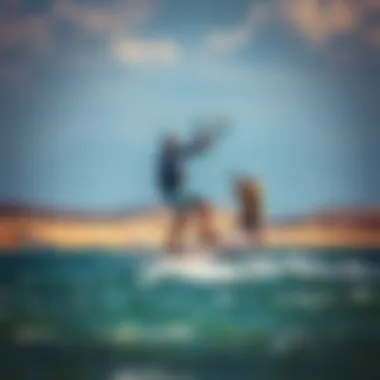
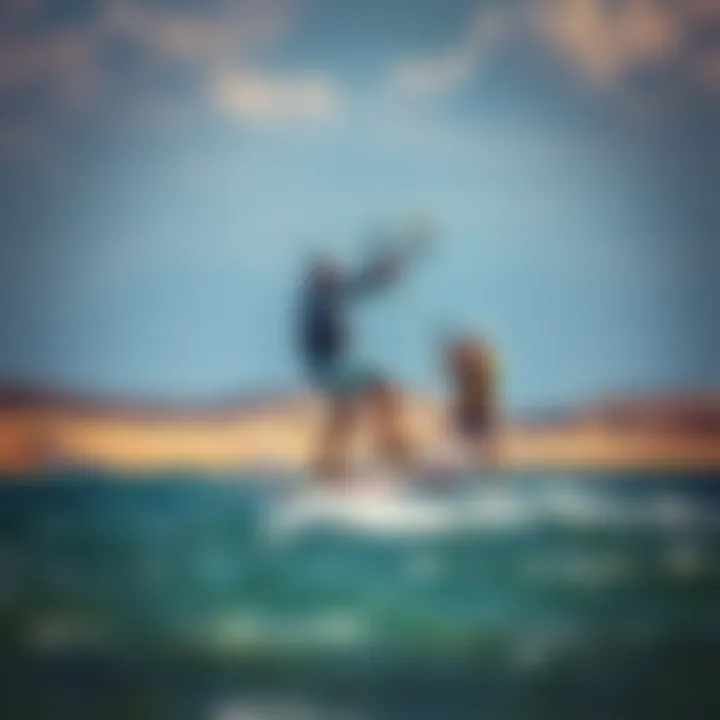
Factors like weight and skill level must also be taken into account. Typically, heavier riders may need larger boards to support their weight effectively.
In summary, the importance of selecting the right size and shape:
- Stability vs Speed: Larger boards offer stability; smaller boards give speed.
- Rider Weight: Affects board choice significantly.
Community and Resources
In the realm of hydrofoil boarding, the importance of community and resources can’t be overstated. These two aspects blend together to create a rich environment where both novice and seasoned kiteboarders can flourish. Engaging with fellow enthusiasts offers many benefits such as sharing tips, discovering new techniques, and learning about the latest gear. This interconnectedness fosters camaraderie, which is invaluable in a sport that can sometimes feel isolating. Resources, on the other hand, provide the foundational knowledge needed to improve skills and enjoy the sport safely and effectively.
Connecting with Other Enthusiasts
Local Clubs and Networks
Local clubs and networks serve as a backbone for the hydrofoil community. The key characteristic of these clubs is the real-life interactions they offer, allowing members to share experiences face-to-face. A major contribution of local networks is access to organized meet-ups and events where riders can not only practice but also socialize. This setting creates a more inclusive and supportive atmosphere for learning.
A unique feature of local clubs is the opportunity to participate in group lessons and workshops organized by experts in the field. Such collaborations often result in better learning outcomes as multiple perspectives can enhance the understanding of techniques. The downside might be density during peak times, which could limit personal focus, but the overall advantage of being part of a community far outweighs this.
Online Forums and Groups
Online forums and groups present an equally valuable alternative for connecting with other enthusiasts. The significant aspect of these online spaces is the accessibility they provide; enthusiasts can connect from anywhere around the globe. This feature makes it easy to tap into a vast pool of knowledge and experience. Whether it's finding localized spots for riding or troubleshooting gear issues, online communities can facilitate instant communication.
The downside may come when sifting through information; while many insights are shared, not all of them are reliable. Being discerning about who to trust is crucial when learning from these virtual resources. Ultimately, online forums can serve as a great complement to in-person connections, enriching one’s experience in the sport.
Educational Resources
Videos and Tutorials
Videos and tutorials are indispensable tools for today’s learners who thrive on visual content. With platforms like YouTube hosting countless instructional videos, kiteboarders can grasp techniques from the comfort of their homes. This is especially useful for understanding complex maneuvers that can be difficult to grasp just through written instructions.
Additionally, videos can demonstrate real-time progress and common pitfalls, thus providing practical insight from experienced riders. The drawback might be finding the right video among a sea of options, but dedicated channels that focus on hydrofoil riding often have a well-categorized content library to streamline the process.
Workshops and Clinics
Workshops and clinics offer hands-on experiences that can be invaluable for improving skills in hydrofoil boarding. These in-person events bring together riders at various skill levels and are often led by seasoned professionals who provide tailored guidance. A distinct feature of workshops is the immediate feedback from instructors, which can dramatically shorten learning curves.
However, such events may require a time commitment and sometimes a financial investment, which might limit accessibility for some. Despite these challenges, the tailored experiences gained in workshops can often lead to breakthroughs in riding performance, making them a worthwhile consideration for serious learners.
"Engaging with a community around hydrofoil boarding not only enhances individual skills but also enriches the overall experience of the sport."
By tapping into these communities and resources, kiteboarders can significantly elevate their skills, confidence, and overall enjoyment of hydrofoil boarding.
Future of Pumping Hydrofoil Boards
The landscape of pumping hydrofoil boards is constantly changing, and it’s crucial to take a gander at where this thrilling sport is headed. With outdoor sports like kiteboarding seeing an ever-increasing participation rate, understanding these evolving trends is essential for both enthusiasts and newcomers alike. The future doesn’t just lie in catching the next wave; it’s in harnessing design innovations and sustainable practices that will redefine how we interact with the water.
In this section, we'll explore two major facets worth discussing: innovations in equipment design and the trends shaping kiteboarding culture.
Innovations in Equipment Design
Emerging Materials and Technologies
When we talk about emerging materials and technologies, we’re diving into how the construction of hydrofoil boards is evolving. Recent advances have given rise to lighter and more durable materials, such as carbon fiber and advanced composites. These materials are not just about losing weight; they offer exceptional strength, making them ideal for the rigorous demands of hydrofoiling.
Key Characteristics: The impressive high strength-to-weight ratio is a singular advantage. Practically speaking, these enhancements translate into better performance on the water. It allows riders to carve sharper turns and maintain speed with less effort.
"Crafted with the latest tech, tomorrow's hydrofoils may well blend performance with sustainability, a combo that's hard to beat."
However, while these materials pave new paths in performance, there are also pitfalls. The cost can be daunting for many weekend warriors, making these high-tech boards less accessible. As demand grows for innovative products, the market will continue to shift, pushing even more advancements into the limelight.
Sustainability in Manufacturing
Sustainability has become a buzzword across various industries, and hydrofoil boarding is no exception. The rise of eco-friendly manufacturing practices is helping to reduce the carbon footprint associated with the production of boards and foils. From using recycled materials to eco-conscious production techniques, it’s a step in the right direction.
Key Characteristic: One standout feature of sustainable manufacturing is the lifecycle assessment of materials. Companies are increasingly focused on ensuring that their products not only perform well but also minimize harm to the environment.
The benefits are manifold; it appeals to the environmentally conscious consumer and can foster a sense of community among those who value preserving the oceans they enjoy. On the flip side, transitioning to these methods can come with a higher price tag, potentially limiting accessibility for some riders.
Trends in Kiteboarding Culture
Growing Popularity of Hydrofoiling
Hydrofoiling's rise has become nothing short of a cultural phenomenon in the world of kiteboarding. Once niche, this technique has found its footing, drawing new faces to the sport. The unique experience of riding above the water not only looks incredible, but it offers a different level of sensation.
With features like quiet rides and the ability to perform various stunts, hydrofoiling has garnered interest from traditional kiters and those outside the sport. It’s not just about the excitement; it’s also about aesthetics and the growing online community showcasing skills and adventures.
That said, while its popularity brings in more riders, it does push the limits of safety and gear accessibility, demanding global manufacturers to step up their game.
Integration in Competitive Formats
The inclusion of hydrofoiling in competitive formats is an encouraging sign for the sport's trajectory. Recently, competitions have started to embrace hydrofoil events, blending traditional speeds with the technicality of foiling. This opening up of competitive formats signifies a recognition that hydrofoiling is here to stay.
Key Characteristic: Events focusing on hydrofoiling are enriching the community, raising the bar for athletes while offering spectators thrilling visuals. The integration fosters a more competitive spirit but also emphasizes the need for solid safety standards and regulations to protect participants.
Further Reading:
- Wikipedia on Hydrofoiling
- International Kiteboarding Association
- Reddit Kiteboarding Community
- Kiteboarding Gear Reviews and Discussions



